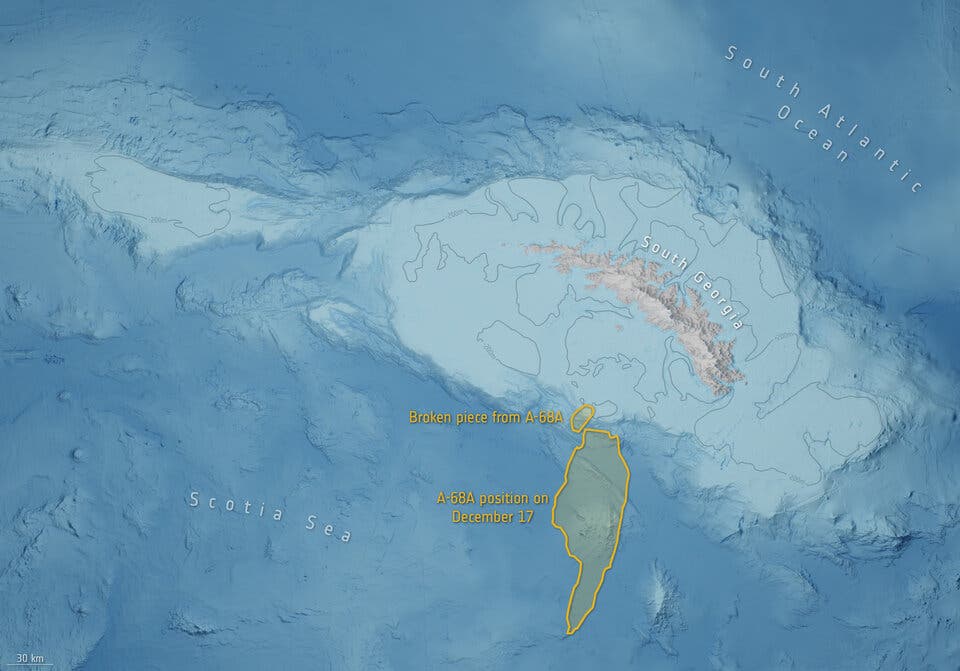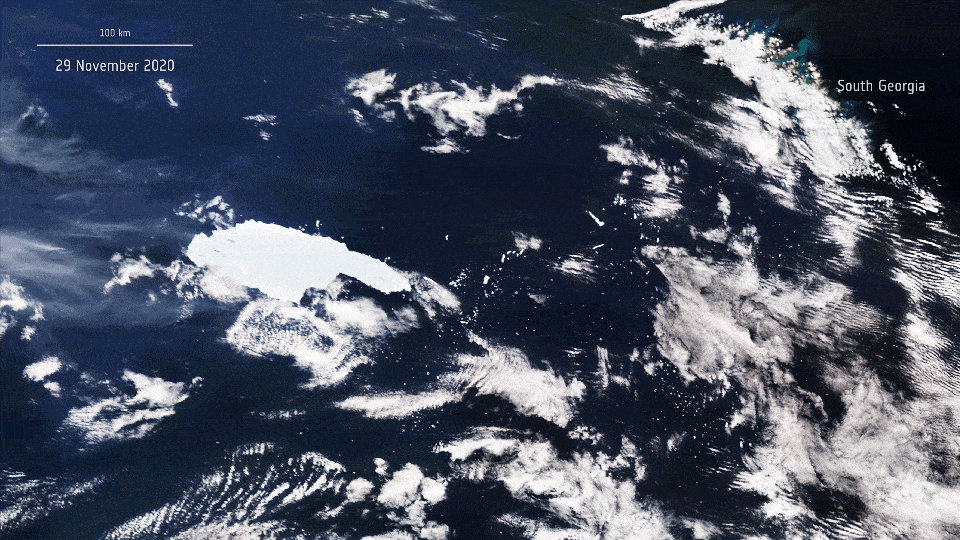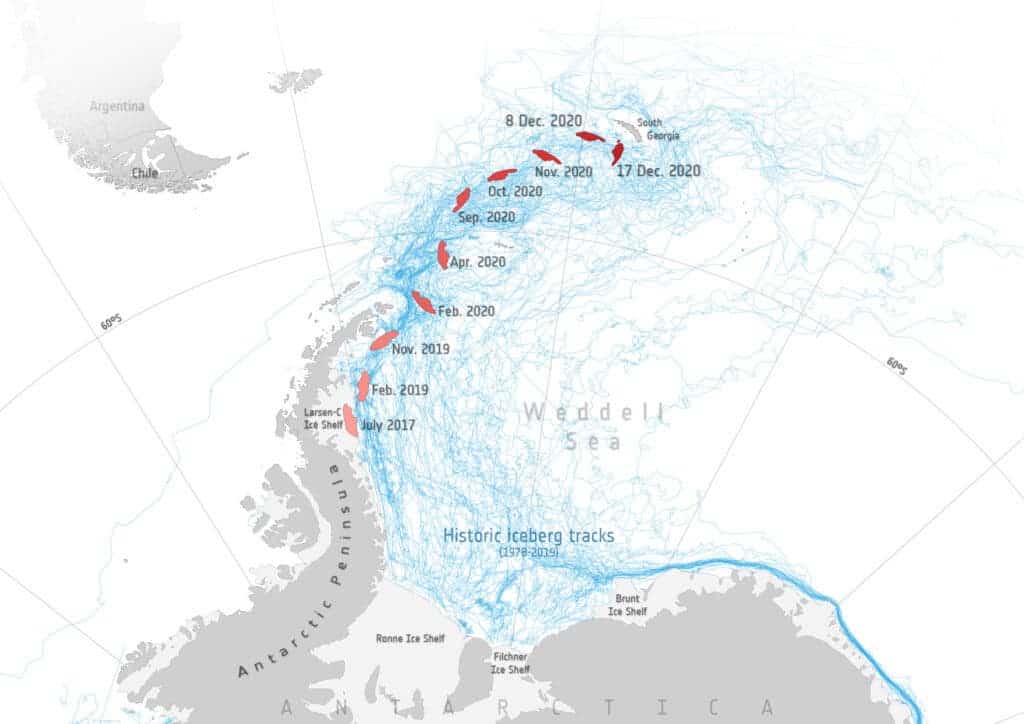A massive iceberg once considered the world’s largest has just lost its leading position by splitting in two and losing a big chunk the size of Queens and the Bronx combined. The A-68a berg first split from Antarctica’s C ice shelf in 2017 and has been drifting to the north ever since

A-68a is essentially a moving frozen island, with cliffs that rise up 30 meters above sea level. It has already drifted about 1,400km north through an area known as “iceberg alley” and is now about 500km away from South Georgia. It’s a track that many icebergs have taken, but the ultimate fate of A-68a is still hard to predict.
The iceberg lost a first chunk soon after splitting from Antarctica and led to the largest section being renamed from A-68 to A-68a and to a smaller piece called A-68B. Then in April 2020 the main iceberg also lost another piece, leading to a new section, A-68C. Now, a crash into the shallow seabed has led to another big split.

Satellite images by the European Space Agency (ESA) showed that the iceberg turned around in a clockwise direction, moving one end of the berg closer to the shelf and into shallow waters. In doing so, the berg could have scraped the seafloor, which caused an enormous block of ice to snap off the iceberg’s northern tip. The chunk of ice now measures 18km long and 140 squared kilometers.
The split means the remaining A-68A iceberg is now much smaller, at about 3,700 square kilometers and with a length of 135 kilometers — and it’s no longer the world’s largest. The leading position in the ranking is held by the A-23A iceberg, which measures almost 4,000 squared kilometers and is currently stuck in the Antarctic Weddell Sea.
It’s now unclear the direction to which the main A-68A iceberg is now heading. Scientists at ESA believe that it could follow its journey to the island of South Georgia as many other previous icebergs have done in the past, moving in a southeast direction, before turning north. The map below shows the different positions of the berg over the past three years.

Sue Cook, a glaciologist at the Australian Antarctic Program Partnership, told The Guardian said that while the iceberg is following a familiar track to many others its ultimate fate is hard to predict. Weather patterns, currents, and the shape of the iceberg made predictions difficult, she added.
Scientists are concerned that if the iceberg remains offshore for too long it could block the nearby waters where the penguins and seals that live on the island feed. More breakage is still possible as the iceberg continues its trajectory.
“The actual distance [the animals] have to travel to find food (fish and krill) really matters,” Geraint Tarling, an ecologist with the British Antarctic Society, said in a statement. “If they have to do a big detour, it means they’re not going to get back to their young in time to prevent them starving to death in the interim.”









